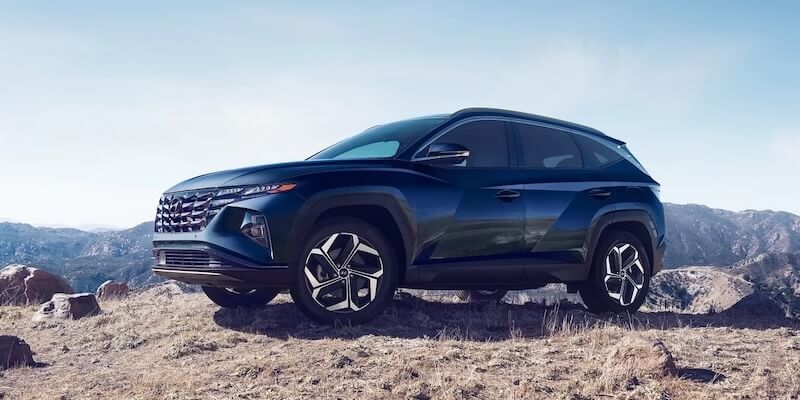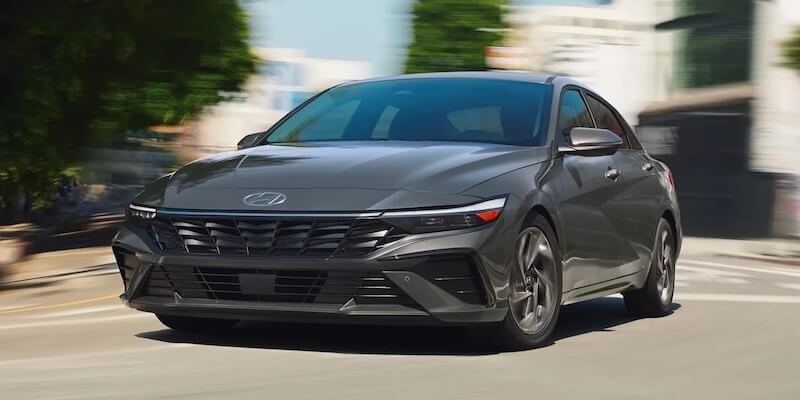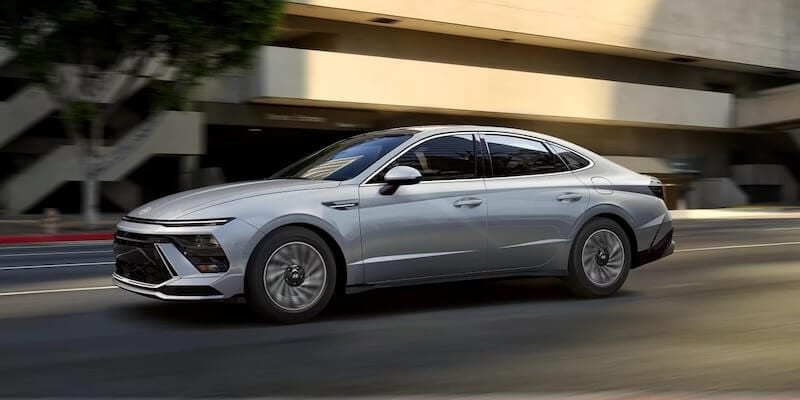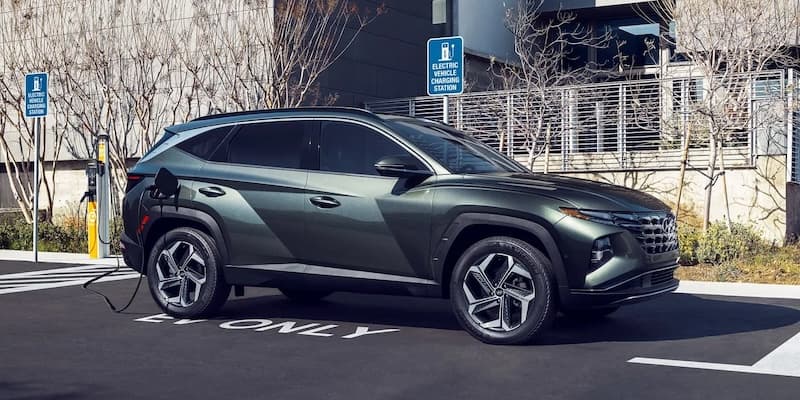Get better MPG with Hyundai hybrid models or enjoy all-electric driving for short trips around town with plug-in hybrid models - all without sacrificing the convenience of a gasoline engine.
Hyundai Hybrid Models, Benefits, & FAQs
Go farther with Hyundai hybrid models
2024 Hyundai Hybrid Models
For 2024, Hyundai has three regular Hybrid models: Tucson Hybrid, Elantra Hybrid, and Sonata Hybrid.
2024 Hyundai Plug-In Hybrid Models
Hyundai currently offers one plug-in hybrid model for 2024: the Hyundai Tucson Plug-In Hybrid.
Hyundai Hybrid Benefits
Hyundai hybrid and plug-in hybrid models use less gasoline which helps you save money by visiting the pump less often.
Better MPG
At lower speeds, Hyundai hybrid vehicles use more electric power and less gas resulting in better fuel economy.
Regenerative Braking
Regenerative braking converts braking energy into electricity that charges the vehicle's battery.
All-Electric Mode
Hyundai plug-in hybrid models offer an all-electric mode, which allows you to drive with only electric power for short distances.
Hyundai Hybrid FAQs
A plug-in hybrid and a regular hybrid are both types of vehicles that combine an internal combustion engine with an electric motor and battery. However, there are key differences between the two:
Regular hybrid: Hybrids have smaller batteries compared to plug-in hybrids. These batteries are used to assist the gasoline engine and store energy from regenerative braking but are not designed to be recharged from an external power source. As a result, regular hybrids cannot be driven solely on electric power for extended distances.
Plug-in hybrid: Plug-in hybrids have larger batteries that can be charged from an external power source, such as a wall outlet or a charging station. This allows plug-in hybrids to operate in all-electric mode for longer distances, sometimes even covering the entire daily commute without using any gasoline.
For example, the 2024 Tucson Plug-in Hybrid offers a battery system capacity of 13.8 kWh, while the 2024 Tucson Hybrid offers 1.49 kWh.
Hybrids tend to have better fuel efficiency since they use more electric power and less gas at lower speeds. And their batteries don’t have to be plugged in–they get recharged entirely by regenerative braking.
The benefits of owning a plug-in hybrid may include state tax credits plus state incentives and driving solo in carpool lanes where available. When driving in all-electric mode, you save money on gas by using only electric power for short distances. And you also get instant acceleration from the electric motor. In hybrid mode, you get great efficiency and performance thanks to the combined gas and electric power.
No need for external charging, lower upfront cost, and a longer range without worrying about recharging.
Plug-in hybrids offer extended electric-only range, lower fuel consumption and emissions, the ability to recharge from an external source, and a quieter driving experience.
Yes, a Hyundai plug-in hybrid can run on gasoline only. One of the key features of a plug-in hybrid vehicle is its ability to operate using either gasoline or electric power, or a combination of both, depending on driving conditions and the state of charge of the battery.
Hyundai offers three options to recharge your plug-in hybrid vehicle:
Home Charging
You can plug into a standard 120V AC outlet at your home. Getting from 0% to a full charge can take up to 10 hours or more, depending on the vehicle and other conditions. Level 2 charging is much faster but requires specialized equipment that plugs into a 240V AC outlet, which is typically used for larger appliances like dryers and water heaters.
Portable Charging
Connect to regular household power.
Public Charging Stations
A charging cable connects your Hyundai plug-in hybrid to public charging points. This cable can also be used to connect to a home wall box.
Level 1
This is the easiest home charging option, since you simply plug into a standard 120V AC outlet at your home. However, Level 1 charging takes significantly longer than other charging options.
Level 2
The faster way to charge at home. Level 2 charging requires specialized equipment that plugs into a 240V AC outlet. Fully charging your vehicle can take as little as 7 hours depending on the model and various conditions.
Level 3
Found at public locations like charging stations and shopping centers. Using over 480 volts, DC fast chargers can take your vehicle from 10% to 80% in as little as 25-64 minutes, depending on model and trim, current battery charge level, output of the charging unit, vehicle and battery settings, and outside temperature.
The same maintenance for a traditional combustion engine model applies for hybrid powertrains, with additional EV-specific checkups when going in for your routine service appointment. Follow your intervals as listed in the supplied owner's handbook. If you are considering going with a Hybrid Electric Vehicle (HEV) and want to learn more about this topic, feel free to give us a call for details.
-
AutoNation Hyundai Savannah
7011 Abercorn Street
Savannah, GA 31406
- Sales: 888-216-2804
*All figures are EPA estimates and for comparison purposes only. Actual mileage may vary with options, driving conditions, driving habits and vehicle's condition.
**33-mile All-Electric Range based on a fully charged battery pack and 80 combined MPGe. MPGe is the EPA-equivalent measure of gasoline fuel efficiency for electric-mode operation. 35 Combined MPG (gas). All figures are EPA estimates and for comparison purposes only. Actual range and mileage will vary with options, driving conditions and habits, vehicle and battery's condition, battery temperature, outside temperature and other factors.





